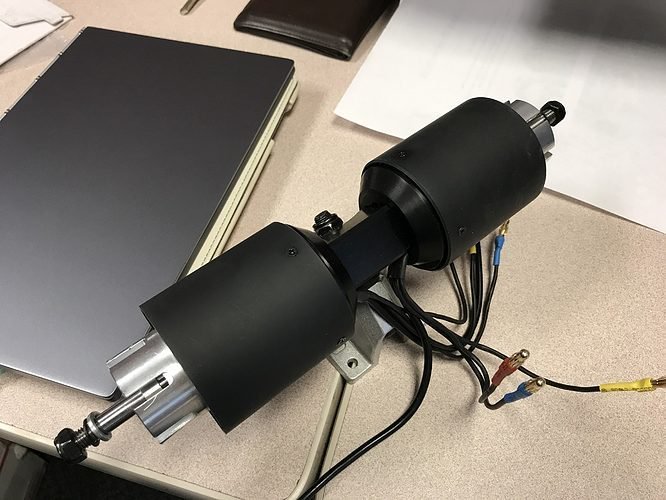How about maintenance? Dont those “direct drives” or “gear drives” need more maintainance ?
They’re enclosed, with lubricant, no belt to break, and no dirt to get in and wear the gear mesh.
What maintenance are you expecting?
Figured over time moisture and just wear will require lubrication and not to mention rust if the gears themselves are not aluminum
Its enclosed in a case and you really dont want aluminum gears it wouldn’t last very long, gear drives have hardened steel gears like cars to handle the stress, pullies are different cause the belt takes some of that stress off the drivetrain.
Yea I figured that much hahaha just wondering about it because I have belt drive on my boards now I snapped one of my chain drives because the chain kept hitting the floor and the sprocket bent too just want to know more about these see if it would be a better choice for me
As @Battosaii said. They are enclosed in a casing made of Anodized Aluminum and POM. Motor Spurs are typically hardened steel, with a POM wheel spur for silence. POM-C is a self lubricating material making it great for gears.
Edit: and have a Teflon sliprings to keep the wheel to gear interface sealed…
My guys I already said this, the whole point of what I said was that when you are gearing an electric motor you are just gearing for the speed you will be traveling most often. @Deckoz Dont misunderstand what I am saying, EFFICIENCY OF A GEAR SYSTEM will not change from a reduction. That is what I was saying. I do not know how many times I can explain this. The efficiency of a drive train or gearbox is defined as how much energy you are loosing to friction as heat. That means that an engine making 100 hp directly (Crank HP) but makes only 90bhp (Brake Horsepower or the hp at the wheels). That system has a EFFICIENCY OF 90%. Don’t argue about something that no one is trying to disprove.
I imagined I was making this clear
This is such a naive comment because that just explains why your point is invalid. A car on a freeway, static speed, static gearing, It DOES NOT have to change gears while going a constant speed. However it DOES NOT matter because it is within its efficiency range for that gear. In a city stop and go traffic causes the car to change speeds a lot and hence shift gears to maintain RPM. An esk8 CANNOT shift gears, so that means it has one efficiency range at a certain rpm. An esk8 has only one possible gear ratio, so it is only efficient in at one range of rpms.
Like I already said, choose your gearing based on your average speed, that is what will give you most efficiency.
Again, if you took one look at the graphs you will see exactly what I’ saying. By changing the gearing you are STILL making the same Mechanical Watts (Which means the efficiency IS NOT CHANGING) and at the SAME motor rpm, ALL that changes is what speed that peak wattage is at, that peak wattahe is where you are most efficient
The point I was making was
No gears, no pulleys. Aka direct drive

Vs any type of gearing system.
The first one just has magnet and bearing friction…
While geared or pulley have more parts in the drive train…so more places for losses…
As i said in reply to
And that last quote is just to show how you pulled an Italy in the middle of this topic
No you just missed this
So where is the Italy?
Sigh. Let me simplify and remove gears and friction out of the equation so you can understand. Lets say you have a rocket in space with mass, M. You want to accelerate it with a rate, A. How much force do you need to apply to accelerate mass M at rate A? If you can answer that, then answer the following:
You take that same rocket in space of mass M. How much force do you need to apply to maintain it at a constant velocity, V?
Gears are merely rotational mechanical advantage to multiply (or divide) the torque (aka force distance) of a motor, but make no mistake force is required to accelerate, not to maintain velocity (in the simplified scenario). Of course on ground, there is an opposing force in the form of rolling and air resistance, but at freeway speeds they’re still not as great as the force required to accelerate the mass of a car. And at eskate speeds, rolling and air resistance are even lower.
@EverBlade21 I’ve set up a comparison to see how many motor amps are required to maintain 20mph with 2:1 gear reduction vs 1:1 gear reduction…
(50v battery, (2) 100kv motors, 0.1ohm, 100mm tire)
^according to the wind drag calculations ~224w mechanical is required to maintain 20mph…
2:1 (reduction) requires 4.52a total battery amps (226.18w electrical) & 3.28a motor amps per motor to maintain 224w mechanical @ 20mph generating 1.07w ohmic heating per motor
1:1 (hub) requires 4.65a total battery amps (232.63w electrical) & 6.56a motor amps per motor to maintain 224w mechanical @ 20mph generating 4.3w ohmic heating per motor
the 226.18w electrical at 20mph constant with 2:1 works out to ~11.309 watt hours per mile.
by contrast 232.63w electrical at 20mph constant with 1:1 works out to lower efficiency— about ~11.631 watt hours per mile.
it would appear that at the same constant 20mph speed, the 1:1 requires more watt hours per mile (is less efficient) than 2:1.
